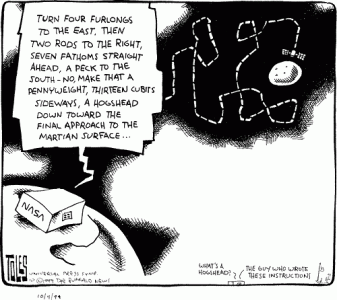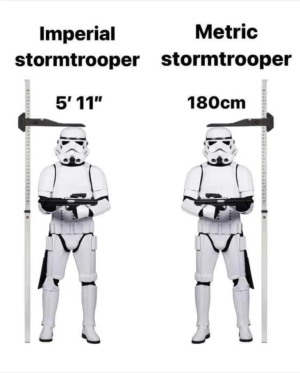Meh. I was in school while they tried to obliterate the Imperial measurements system. I was still in school, when News items were starting to point out that despite the Metric System supposedly being superior, they were having to teach Imperial Measurements to College and University students, so that they could understand stuff like that the majority of the prairies was surveyed out in 1 mile, by 2 mile grids, or that (ironically, since they are not actually) houses were built with 2x-dimensional lumber, and if you needed to repair those, you needed to understand the dimensional differences, between Metric and Imperial measure.
The only guys that can live without knowledge of legacy systems, are guys that have no responsibility to go back and fix what they screwed up, yesterday!
I got a call one night, about 1 in the morning, from a Farmer Friend that needed to know if I had a 17mm socket, He had NO Metric tools. Turned out the "special" bolts that GM used to secure his clutch to the flywheel in his "not Metric truck", were Metric...
Reality is, even the Inch, is defined in Law, as being 25.4mm. A pound of meat (a days ration, usually) is 454 grams, or near enough, half a Kilo. A Liter and a Quart are darn near enough to being equal too. As are the breakdowns, with 250 Ml ~= 1 cup. Etc.
A fella could do a lot worse than to simply shrug and get on with understanding both the Legacy systems AND the modern ones.


